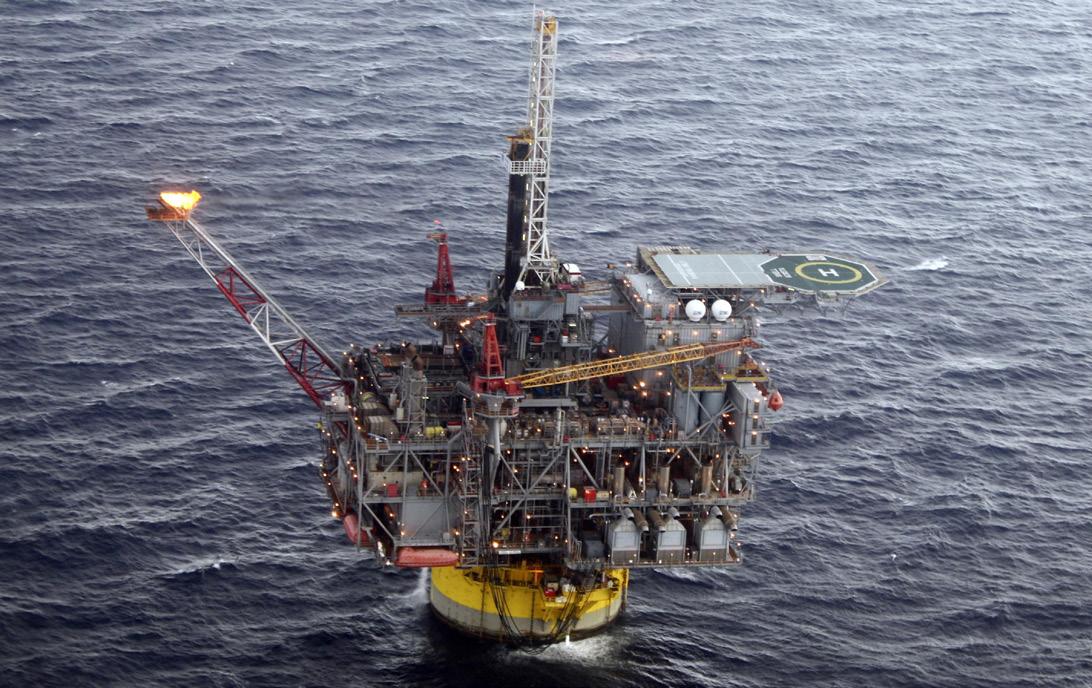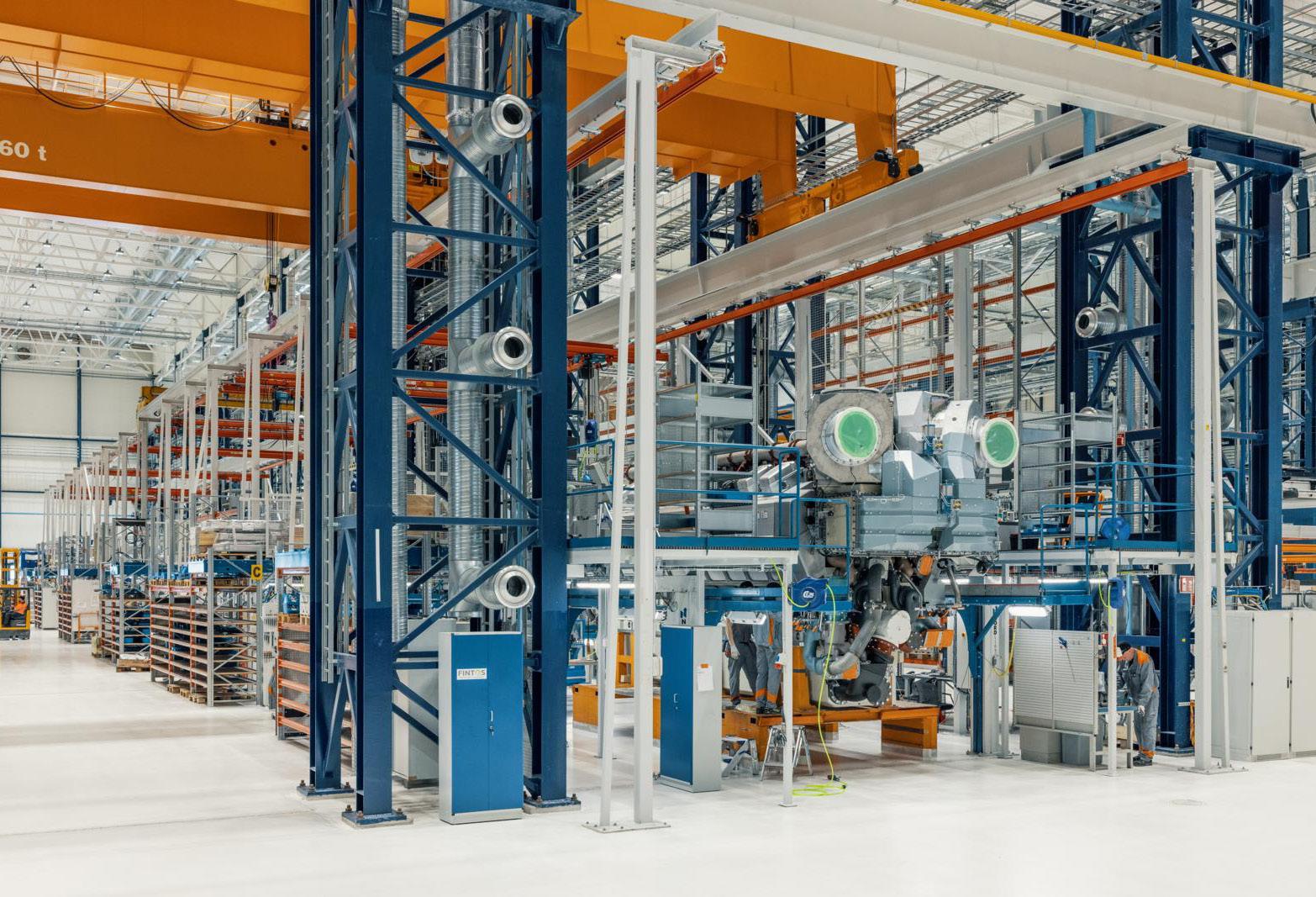
7 minute read
Offshore - Equipment
Royston has completed engine overhaul work on the Stena Spey
Semi-submersible contract for Royston
Advertisement
UK’s Royston Marine has completed the overhaul of diesel generators onboard the semi-submersible mobile offshore drilling unit Stena Spey. The work, which is part of an on-going diesel engine maintenance and service programme for vessels owned by international drilling contractor Stena Drilling, saw cylinder heads, pistons and conrods overhauled as part of an extensive 12,000 running hour service of one Rolls Royce Bergen KVGB12 Diesel generators by Royston engineers on-board the vessel while it was located at Orkney.
Reflecting continued success for Royston in the offshore marine services sector despite current challenges, the work follows the previous overhaul of diesel power units on-board other Stena vessels, including the Stena Don rig, and the 58,000 dwt Stena IceMAX and Stena Carron drillships.
The engines were stripped down to allow engineers to carry-out maintenance and repair work on the 12-cylinder heads, two-unit inspections, main bearing inspection, camshaft inspection, timing chain and drive inspection. Other work, which included repairs to water leaks in No.3 generator, involved removing of cylinder head, piston and connecting rod and renewing the cylinder liner. Following the service, successful trials were completed to check the performance of both engines and repair work was in-line with the manufacturer’s specification.
Meanwhile, work to overhaul main propulsion diesel engines on the 1,659 gt seismic support vessel Mainport Pine operated by Irish Mainport Holdings, has been completed by UK’s Royston Marine. The work saw engineers from Royston carry out a major overhaul of the port and starboard Cummins QSK60 MCRS main engines on-board the 55 m length, as part of a scheduled maintenance programme of critical power systems while the vessel was alongside in the Port of Sunderland.
This involved the removal of fuel injectors, turbochargers, cylinder heads, powerpack assemblies and camshafts. The engine was rebuilt utilising service exchange components, new bearings, seals and gaskets

before extensive sea trails consisting of incremental load testing and alarm shutdowns.
The Mainport Pine is part of a current fleet of survey and research ships, seismic support vessels and tugboats owned and operated by Corkbased Irish Mainport Holdings, which is a provider of marine services to ship-owners, exporters, importers, oil companies, survey companies and offshore wind companies.
Fibretrac crane contract for MacGregor
MacGregor, part of Cargotec, has secured a contract with Otto Candies, to deliver an active heave compensated FibreTrac offshore crane, with delivery expected to be completed by the end of the year. The scope of supply encompasses full delivery of the 150 tonne AHC crane, rated for the customer’s needs at 100 tonne lifting capacity, together with Lankhorst Lanko Deep Dyneema DM20 fibre rope for 3,400 m operational depth. The crane is the first of its type and provides the ability to lift heavy loads at depths that normally require much larger cranes on larger vessels.
This highly innovative crane uses neutrally buoyant fibre rope with an Applied Fibre termination connecting directly to the hook allowing full payload at all depths. This is in contrast to standard wire-rope cranes, where the weight of the steel wire steadily robs the crane of its lifting capacity as more wire is paid out.
The FibreTrac concept was developed in close collaboration with Parkburn Precision Handling Systems, who will deliver the fibre rope Deepwater Capstan (DWC) that gently de-tensions the rope between the high-tension operational side and the low-tension storage side. Parkburn also developed the crane’s Lift Line Management System which manages rope health monitoring and feedback using a combination of sensing technologies and a lifetime usage algorithm developed by DSM based on their DM20 material.
The subsea AHC fibre-rope crane will have the world’s first DNV-DRS class notation based on the DNV-ST-E407 standard. This new standard governs how such a crane and its rope system can remain continually certified based on real-time measurements of rope health and represents a significant departure from earlier certifications based on prescriptive rules and periodic inspections.

The MacGregor active heave compensated FibreTrac offshore crane
Statement of compliance for Ocean Technologies
Ocean Technologies Group (OTG) has gained a statement of compliance for its offshore industry competency standard (OICS) from DNV. OTG’s learning brands have a wealth of experience in both the design and implementation of Competency Management Systems (CMS) and in developing industry recognised competency standards.
OTG has created a new competency standard specifically for the offshore sector, mapped to the International Marine Contractors Association (IMCA) - Guidance on Competence Assurance and Assessment (IMCA C 002 Rev.3). This standard includes competence expectations for the various roles defined within the IMCA guidelines and has earned a statement of compliance from DNV.
“OICS and IMCA’s international competence framework provides a means by which the marine contracting industry can demonstrate the competence of its personnel in the safety-critical positions and other key positions they fulfil,” said Marius Tetlie, Global Manager, Competence Management for OTG.
“At Ocean Technologies Group, we have a proven track record of helping world-leading companies grow the knowledge and skills of their teams through our Competency Management Systems, working closely with them to implement both ready-made competencies linked to specific industry standards and by developing bespoke systems tailored to the needs of their business.”
Seaway 7 contract for Huisman
UK’s Seaway 7 has awarded Rotterdam’s Huisman a contract for the delivery of a 3,000 tonne Spreader Bar. The Spreader Bar will support installation of offshore wind turbines and is able to handle monopiles with the largest diameter and length currently available.
Although the Spreader Bar will be built specifically to Seaway 7’s requirements, it is based on a proven Huisman design. It is optimised to increase both safety and efficiency in monopile and transition piece installation. Safe operations are ensured via hands free sling handling of monopiles, remotely controlled by an exchangeable battery pack.
Seaway 7 will initially employ the Spreader Bar during its execution of the third phase of the Dogger Bank Wind Farm, Dogger Bank C. When all three phases are completed, the wind farm, off the Yorkshire, UK coast, will be the world’s largest with a capacity of 3.6 GW – enough to power 6m homes.
As it seeks to support the development of renewable energy sectors, both on- and offshore, Huisman is expanding its product and service portfolio. The company designs, constructs and maintains a wide range of products to drive the growth of renewable energies and make mineral and fossil fuel extraction more sustainable.
CSM creates SMART solution
Columbia Shipmanagement (CSM) has created a totally SMART and fully digitised jack-up barge under its management as part of a digital twinning
process designed to massively optimise vessel performance. The process, which takes digital vessel twinning to a new level, was undertaken by the team at Columbia’s Performance Optimisation Control Room (POCR) headed up by Captain Pankaj Sharma.
Using non-invasive next generation Internet of Things technology through a wireless eco-system packed with full machine learning capability, the connected vessel benefited from machinery health monitoring as well as enhanced engine diagnostics.
Transforming the SMART vessels into an effective digital twin, the process was one step ahead of pre-existing often fragmented shipto-shore connectivity solutions. And what makes it a SMART vessel? According to Capt Sharma, it is as much about maximising IoT technology and minimising human input as it is about focusing on Artificial intelligence for predictive applications.
With sensor technology and data processing, the vessel uses advanced analytic techniques to identify data trends and anomalies, providing early indicators to avoid potential failures or downtime and help with decision making for crew and shoreside personnel. By using non-invasive sensors, the smart system on the vessel looks for any anomalies while monitoring the vessel’s diagnostics and predictive warning systems. The mix of technologies on-board the vessel has a proven track record in the aviation, wind energy and marine industries.
Optimising engine and vessel performance through the ingenuity of the POCR can help to reduce emissions as well as increase the life of equipment on-board ship, boosting the return on investment for the owner as well as providing accurate equipment maintenance and condition records which can help to boost a vessel’s resale value. It can also reduce fuel consumption by between 2% and 5% as well as generate a basket of other benefits such as reduced dry dock costs - improved insurance rates and the potential for near zero down time of the vessel. Optimising lubrication can also reduce vessel by vessel lubrication costs by up to 45%.

Columbia’s Performance Optimisation Control Room Floatel International will now become a part of and benefit from Kongsberg Digital’s digital infrastructure Vessel Insight

Floatel International provides top-quality offshore Floatels for extreme conditions and will now become a part of and benefit from Kongsberg Digital’s digital infrastructure Vessel Insight.
Floatel is currently operating in the North Sea region, Australia, Gulf of Mexico and Brazil and have a fleet consisting of five semi-submersible accommodation and construction support vessels. The company is systematically working to reduce its emissions and optimise its operations. As a part of Kongsberg Digital´s infrastructure Vessel Insight, the goal is to gain better control and smarter solutions through digitalisation. Vessel Insight will be deployed on all of Floatel International´s operational rigs.
SORJ











